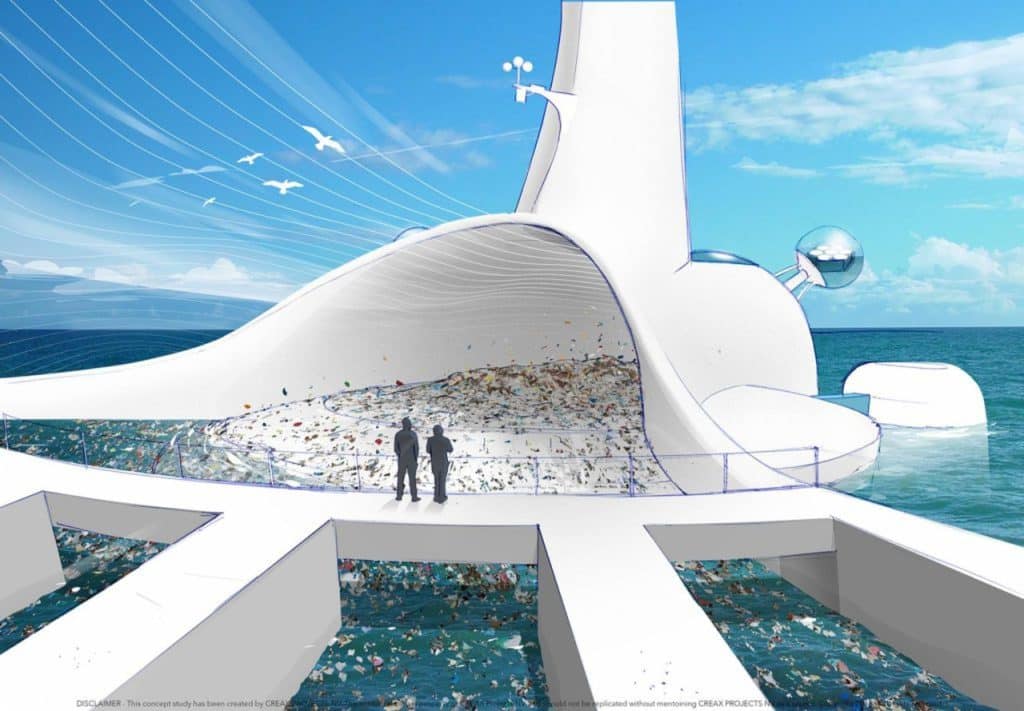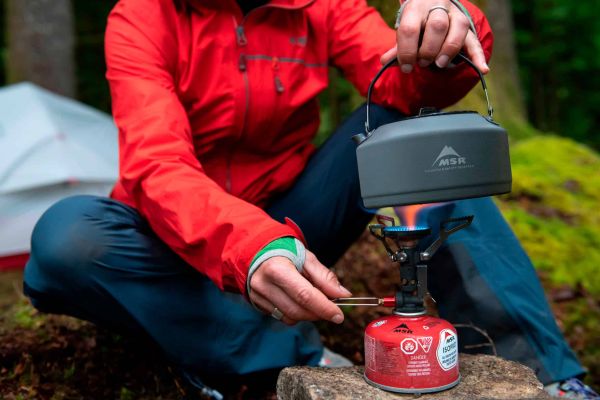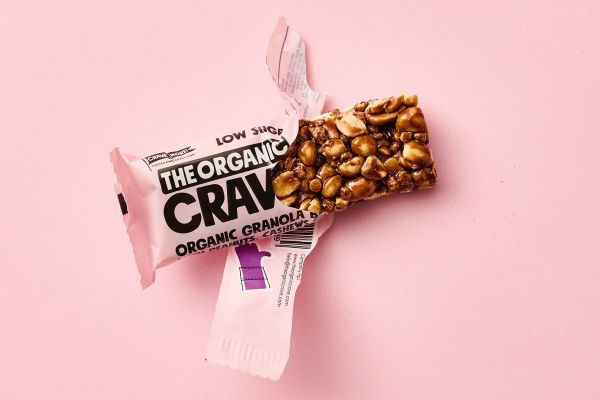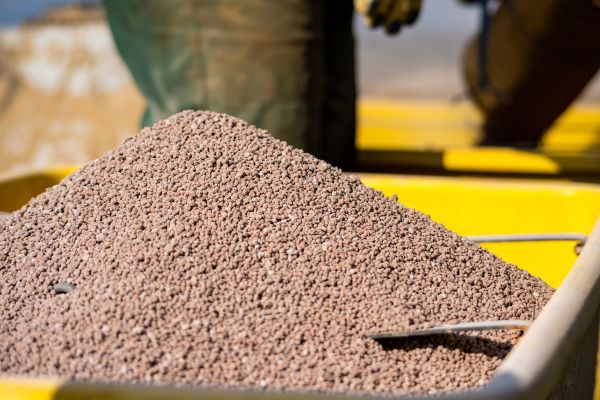Compîle – plastic soup skimmer
- July 27, 2018
At Creax, we care about nature and we love challenges. This makes up the perfect mix for a Friday afternoon brainstorm about the preservation of our beautiful blue oceans, threatened by an emerging problem called: ‘the plastic soup’.
So, what exactly is the problem? Apparently, the equivalent of one garbage truck of plastic ends up in our oceans every minute. As most plastics are made to last, they don’t just go away, and instead keep floating around in our oceans. Of course the best way to ensure that the problem does not get any worse, is to avoid new plastics to flush into the ocean. But what about the plastics already present in the ocean?
Millions of tons of plastics are floating around in our seas. Marine life often mistakes these plastics for food and chokes on it or starves by eating them instead of real food. The plastics are also accumulated in fish and other seafood which end up on our plates. Even though the effects are not yet completely clear to researchers, we can assume that eating plastics cannot be too healthy for us either.
Filter plastics, but no sea animals
Couldn’t we just filter our oceans to remove all the plastic? Unfortunately, if we would do so, we would also filter small creatures out of the ocean, including larvae, eggs, single-celled organisms or even, fish and other larger sea animals who can get caught in nets. This approach would influence the ecosystem drastically.
So, we need another approach.
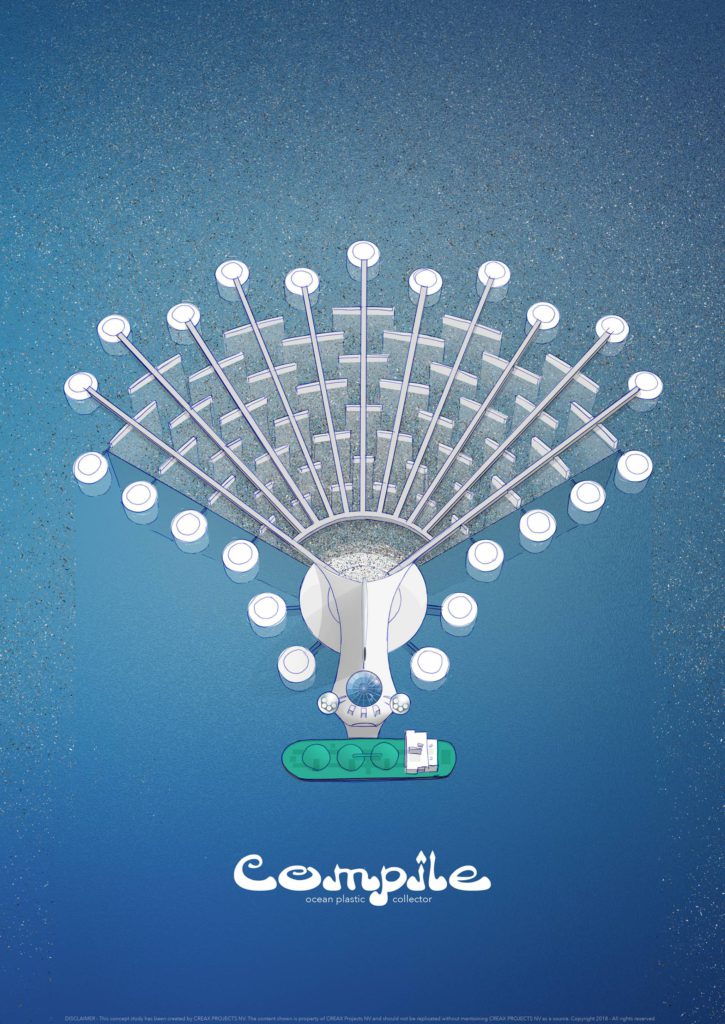
Both living creatures and plastic products have a mix of properties and characteristics that make them unique. At CREAX we usually start projects by making a comprehensive description of the properties of products & technologies. This so called product- or process- DNA can be used in multiple ways. In most cases, we use it to find solutions in applications with a similar DNA. In this case, we used the DNA of plastic particles and plankton to spot the differences between the two. As it turned out, the most distinctive feature is their density. Plankton has a density which makes them more likely to sink or float at specific depths, while the density of plastic would make it float on the surface. However, plastics can be found at the surface but also up to 30m below the water surface. This is caused by waves and currents pulling down the plastics. Only in calm water, the plastics floats.
Product DNA and analogy
So, to separate ocean life from plastics we need to create a calm water column in the middle of the ocean. For this challenge we applied another technique from our CREAX toolbox: The analogy-tool. As we are convinced that every problem has already been solved, this allows us to look into analog domains for possible solutions.
This time, we didn’t need to look that far. Breakwaters are used to reduce the impact of waves just before a shoreline. By placing them one after another, the waves will be broken and their energy lowered, which results in a calm water column where passive plankton will sink and plastic will float on the surface.

To collect the floating plastics on top, we created a passive solution in line with the passive separation column: an artificial beach which collects the microplastics because they are blown ashore. Wind dries the particles and transports them further into a funnel that leads to a large storage space.
Once, every few months, this storage space is emptied by a collecting ship.
Unfortunately, these marine plastics are almost impossible to recycle, but they do have a high caloric value. So, energy could be obtained from these recovered plastics by a pyrolysis reactor onboard the collecting ship.

Important question: How does our solution preserve sea-life? First of all, the artificial pontoon is open at the bottom. Any fish, turtle or other animal can easily escape by swimming down, underneath the pontoon.
Secondly: All sea life can swim, or drift, underneath the artificial beach. To facilitate this, solar collectors catch sunlight on top of the structure and divert it underneath, indicating the exit. This light source ensures that active plankton will also swim towards the exit. This way, no marine life is drifted ashore or trapped inside the artificial island.

Conclusion
With this solution we hope to trap macroplastics but also microplastics which will also float on top of the water in the artificial atoll. “Compîle” is passive and modular, making it possible to scale the system or replace parts if necessary. Overall the system is designed to remain low-cost, passive and environmentally friendly.
We also designed a DIY solution to filter microplastics from the waste water of washing machines: the prize-winning FIYLTER.
